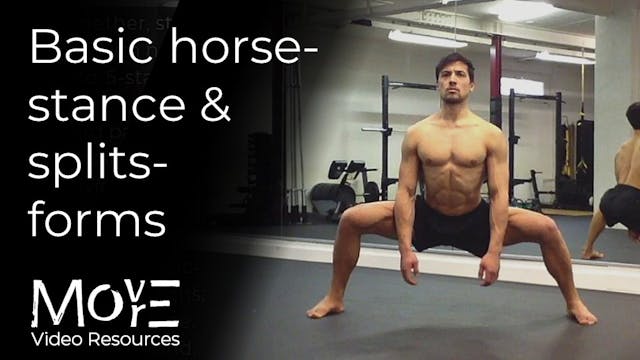Hinging 'straddle-bow'
BW leg-abduction range & forms
•
5m 31s
THE WHAT & HOW:
A progressive leg-abductor and hamstring range-development context. Performed from standing, it is also accessible for those who cannot effectively utilise floor-seated, or even elevated, contexts for similar range-development (i.e. 'Pancake' forms).
Further to contributing to development of the 'Pancake' range, then, the standing, leg-abducted position transitions into what is essentially a 'Middle-splits' form in the same way that the 'Straddle-up' does (it is effectively an isolated version of the second-half of this movement pattern).
LEARN MORE (subscriber-only):
https://drive.google.com/file/d/1AHqpDJ67zUGBo56AO2XIMK7QNz4hN-XX/view?usp=drive_link
_______________________________
For programming, guidance, & support for your physical practice:
FREE fundamental prehabilitation program: https://www.movemoremp.com
Online Support (1 to 1 coaching): https://movemoremp.com/onlinesupport
Elements (standardised programs): https://www.movemoremp.com/elements
[email protected]
Up Next in BW leg-abduction range & forms
-
Basic '("Northern") Horse-stance' & '...
THE WHAT:
Fundamental isometric forms for strengthening leg-abduction ranges, namely in frontal-plane ('horse-stance' and 'middle-split') and sagittal-plane ('front-splits'). For some, consistent practice of these forms with only phasic adjustments to variables alone can be enough to achieve a fu... -
Basic 'low-gait' sequence
THE WHAT & HOW:
A developmental sequence (increasing 'counts') to accustom & condition to the ranges of bipedally abducted 'low-gait', the world between standing, and floor-entrance.As a range commonly avoided simply because of its discomfort, making it more familiar (i.e. patterning, developin...
-
Elevated pancake stretching (loaded &...
THE WHAT:
Various contexts for developing your range in the 'pancake' position, when restriction in range requires you to use elevation. For optimal loading (whether just with bodyweight or an external load) in the ‘Pancake’ form, the shoulders must ideally be able to be positioned FORWARD of the...



